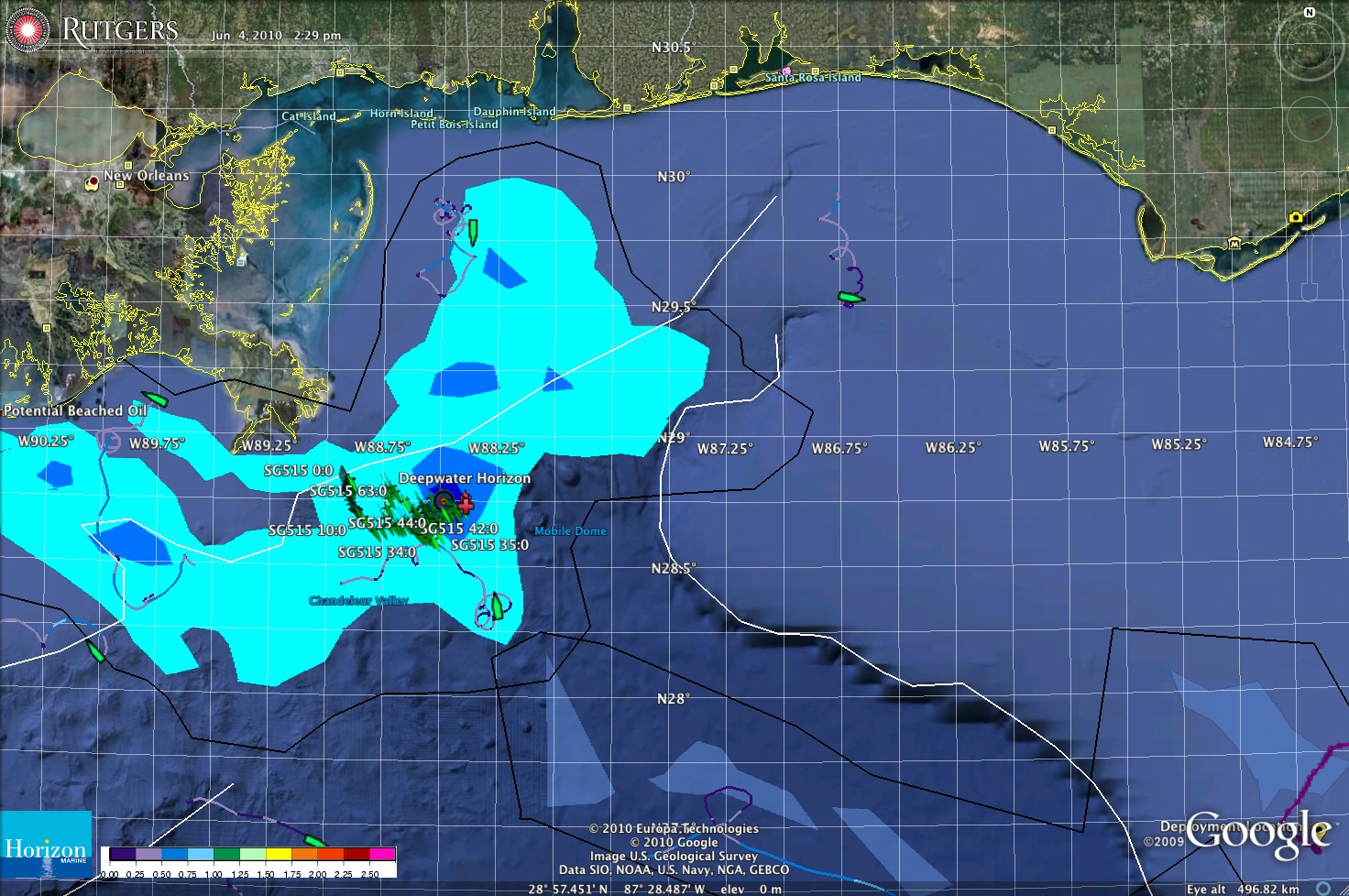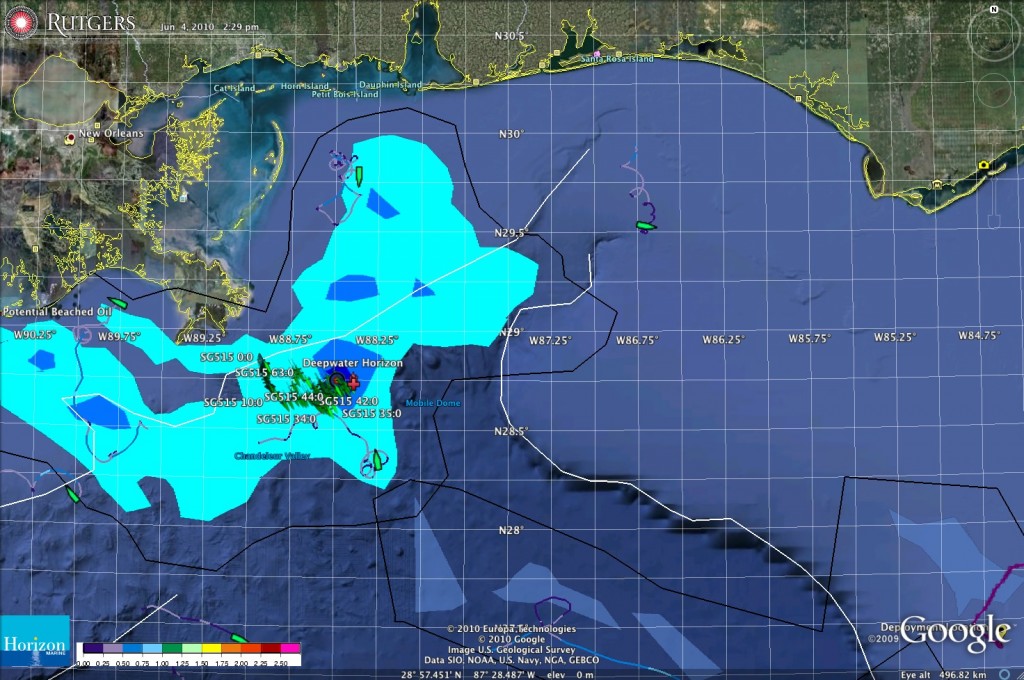October 29, 2014 – We are learning so much about the consequences of mistakes made with deep-water drilling for oil because of the BP 2010 disaster in the Gulf of Mexico. Recently we found out that Deepwater Horizon during drilling had encountered problems with methane hydrate contamination within the casement walls during drilling. And now we are finding out that of the 5 million barrels spilled into the Gulf of Mexico, 2 million remain trapped in the deep ocean with 31% of that oil forming a giant ring around the site of the blowout on the ocean floor. The remaining 69% of the 2 million barrels is unaccounted for.
Recent sampling of ocean-floor sediments done by University of California-Santa Barbara geochemists have been published in the Proceedings of the National Academy of Sciences. A 3,200 square kilometer (1,235 squre miles) area around the site shows the distribution of the plume of oil leaking from the blowout as it permeated the water and then began to settle on the seafloor. The implications for animal and plant life in the water column and seafloor sediments remains unknown.
So what has happened to the remaining unaccounted for 1.4 million barrels? Some may remain suspended in the water column. Some may have eventually reached the surface and evaporated. And some may have been gobbled up by bacteria. But the remaining glop of oil covers a vast area on the ocean floor and current technology makes it virtually impossible to clean it up or recover it.
What a testament to our fossil fuel addiction.













